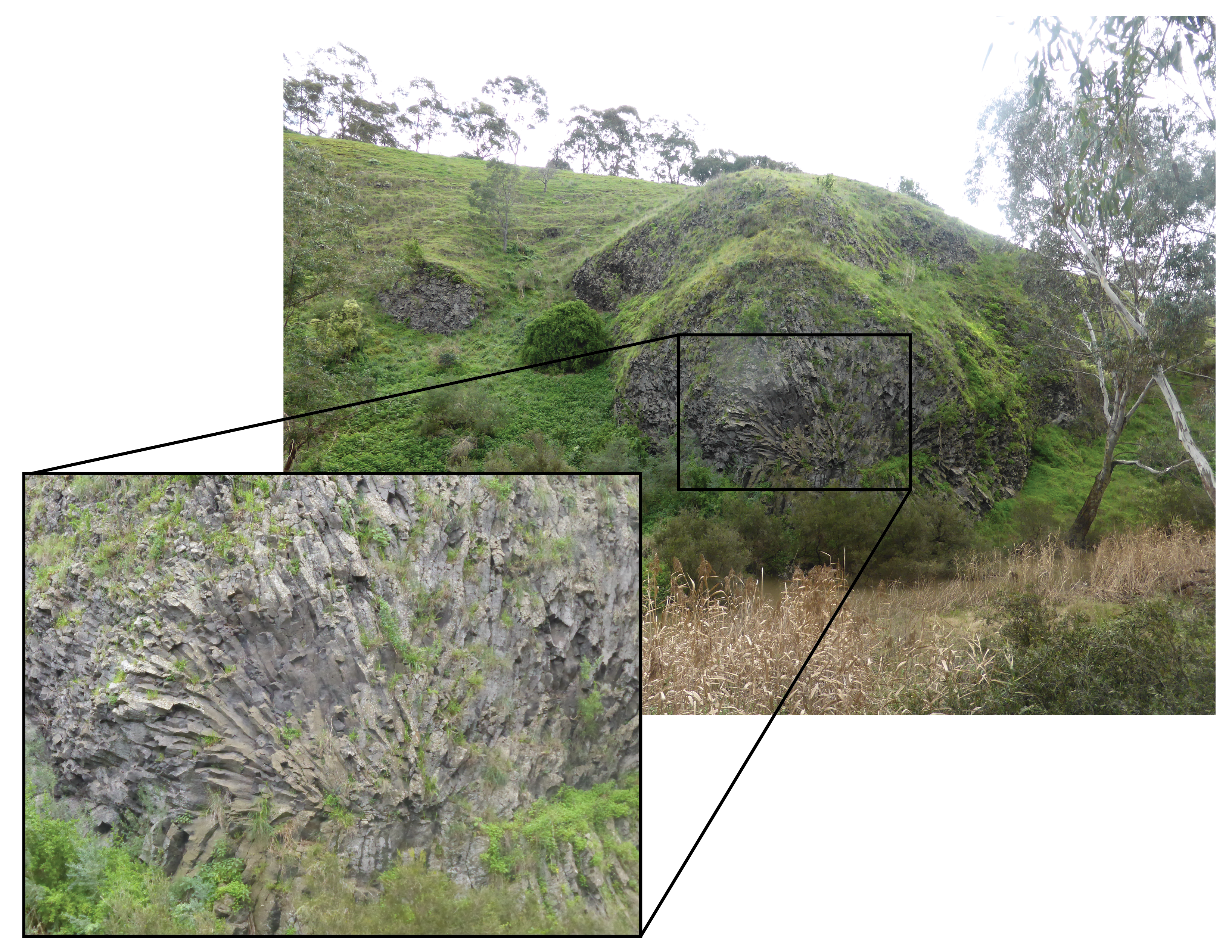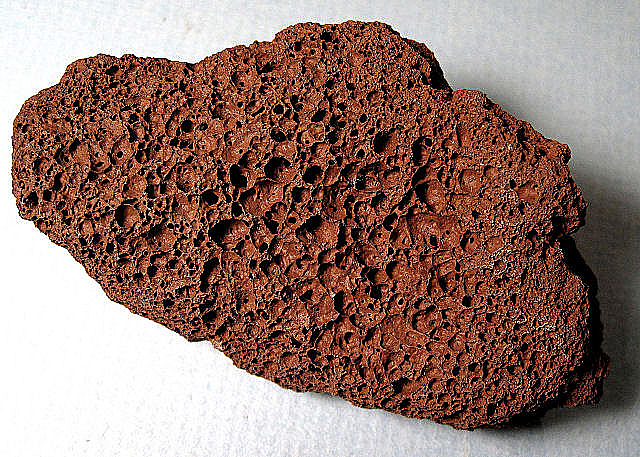The Organ Pipes National Park is just a short trip north-east of Melbourne on the Calder Freeway and well worth a visit. The park features a spectacular set of world-class basalt columns formed by the cooling and cracking of molten lava (below). About a million years ago mafic lava from volcanoes 6 km north of the site flowed through the park, filling the valleys and dips in the landscape.

The volcanics form part of one of the worlds largest lava flows – the Younger Volcanics (>19 000 km2, shown in red in the geological map on the home page). Research has shown that in just a few million years there were over 704 eruption points from 416 volcanic centres, i.e. not exactly the sort of place you would want to live! In fact, the last eruption was ~5000 yeas ago at Mount Gambier in SA, so the province is still considered active. The Daylesford Springs are also a result of these extensive lava flows.
Despite what Hollywood would make you believe, lava flows aren’t actually that dangerous and rarely cause loss-of-life. However, they are probably some of the cooler and more recognisable of all the volcanic features you’ll find in the field. As lava flows – slowly – over the land the surface rapidly cools and hardens to a crust (called lava ‘tubes’). The lava inside is protected from the cool air and remains hot, flowing and pushing the head out in front of it. This is what allows lava to travel large distances.
As lava cools and hardens with time it contracts, forming cracks at the surface (similar to how mud-cracks form after a puddle has dried up). When the stress concentration at the fracture tip is greater than or equal to the tensile strength of the rock (i.e. how tightly packed the rock is, lots of space between particles = lots of compression before cracking), the cracks propagate downwards forming columns perpendicular to the flow of the basalt (See diagram below). The more competent, larger columns (pointed out in the image above) indicate slower cooling, whilst the thinner, irregular, twisting columns indicate rapid convective cooling.

The columnar joints of basalt at Organ Pipes National Park are an excellent example of natural fractures which have obtained a near-optimal hexagonal geometry – the most efficient way to pack things. Why hexagons? Because the distance between the edges and centre is the most equal in a hexagonal shape, yielding the strongest arrangement.
Bees make use of tessellated hexagons in constructing their honeycombs such that Charles Darwin once described the honeycomb as a masterpiece of engineering! The internal angle of a hexagon is 120 degrees, thus when three hexagons meet at a vertex they make 360 degrees. This can also be seen at the molecular level in graphite, in man-made objects like chicken wire and even in the aerospace industry!

The car park of the park is in itself interesting. The highest point in the park (your legs will remind you as you climb back up to it after your walk), the carpark is situated on the very weathered remnants of scoria cone which was producing scoria at the same time the preserved lava flows erupted from volcanoes. The scoria is a light, air-filled (vesicular), brown rock – pick one up and compare it to the dense, dark basalt. They both actually have a similar composition! The difference between the eruptions that form these rocks is the explosivity and the level of dissolved gasses escaping (exsolving) from the lava. Scoria forms from a highly explosive reaction and cools quickly preserving the air-filled holes in the rock.

Basalt like that at the park is extensive in Victoria and historically was used as the main building and paving stone in houses and streets in Melbourne (bluestone). The reason basalt is so dark is simply because it is high in ‘dark’ minerals – minerals with less silica (i.e. dominant mineral in quartz) and more Iron and Magnesium. Dark minerals include: magnetite, plagioclase, amphibole, pyroxene and biotite. As you walk around the Melbourne CBD, have a closer look at what you’re walking on! You will notice that it is very fine grained (due to its rapid cooling) and often contains vesicles.
There are a number of picnic tables and walking tracks, as well as toilet and water facilities at the park. Parks Victoria provide a very useful guide to the park, which would be useful to have when you visit. However, everything is clearly signed so it is not essential.
We acknowledge the the Wurundjeri people as the Traditional Owners of the land upon which this field guide has been created. We recognise that many areas hold deep cultural significance for local Aboriginal groups and we hope you will keep this in mind as you explore the region.


Leave a comment